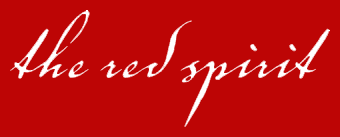About The Red Spirit
History
No one knows exactly when native people first made their home on this land. Perhaps they chose it because the high ground and woods gave them protection. Most likely, the abundance of wildlife sustained them and the low wetlands nearby provided water, food and materials for their weaving. The neighboring wetland was called “muck” and only hemlock trees grew in it. At that time, the muckland was impassable and full of rattlesnakes which the native people trapped. In the 1860s, the hemlocks were cut down for home-building and the bark was hauled to Plummerville to be used in the tanning process.
In the late 1800s, A.M.Todd purchased the land and brought people over from Denmark to teach him about this “muck” and how to drain it. Special shoes were made for the horses to walk through muck and during this time, 2 mastodon skeletons were found. Todd tried various crops and by 1927, he grew 98% of the world’s peppermint. In the late 1930s, wilt destroyed the peppermint but to this day, it is still known as the Todd farm.
The earliest recorded history for this 20 acres of high ground began in 1862. It passed through numerous investors over time until the 1940s when it became a wooded pasture for cows.
In the 1980s, the heart of the woods acquired its first structures, a barn and a cabin with a manufactured home attached. Arrow heads and pottery shards were found over the years, some of the trees had been badly lumbered and grapevine still draped and strangled others. Blackberry branches were a good fifteen feet long, making it nearly impossible to walk in some places.
My work, to care for the trees and land and encourage wildlife, began immediately after purchasing this land 1994. My husband at the time and I first saw the Red Spirit in the early spring during one rainy night when we were sleeping in a teepee. I awoke to the sound of rain and saw a red glow through the canvas. It disappeared when we went out to investigate but reappeared the following night. This time it was inside the teepee going up the poles and out the smoke hole. Only a few people we know have seen this Red Spirit energy but all have wondered what it might be. I thought it was connected to the indigenous people who lived here originally but later discovered that it was my energy visualized.
Today, the Red Spirit would say this is the place where deep connections are still made. Discover what it means to feel quietly present and at one with this earth. Listen to the peepers singing under a magnificent star-filled sky. Enjoy the sight of wild turkeys and deer grazing. Feel the serenity of the pond at sunset. Be filled with awe and become keenly aware that this place is where you come to be renewed, enriched and once again connected.
As of 2011, a large pond has replaced the boggy area and is visible from the cabin. And, every spring, hundreds of trillium bloom on the banks of a stream to the South, once a branch of the Black River. Many beautiful beech trees and hemlocks along with a variety of other tree species grace this rolling landscape. Turkey, deer, fox, coyote forage here and turkey feathers are often found. Nearby, a wildlife preserve attracts geese, eagles and great blue heron. There’s a hedgerow of white pines and seed-bearing trees that feed and shelter wildlife as does the nearby Allegan State Forest.
I thank John Pahl of Allegan, Michigan for providing me much of the history. He is author of Ghost Towns & Ghosts and co-author of River & Lake, a Sesquicentennial history of Allegan County.
About Karen
 I have had numerous careers, from operating room scrub nurse and pioneering a farm to Chicago advertising copywriter and antique painting restoration. None compare to my mission here. At one point in my life, I used to pass this beautiful woods never thinking that one day I would be the caretaker. One of my greatest joys is having people experience this space, feel its healing energy and get in touch with the wonders of nature in peaceful silence and with self.
I have had numerous careers, from operating room scrub nurse and pioneering a farm to Chicago advertising copywriter and antique painting restoration. None compare to my mission here. At one point in my life, I used to pass this beautiful woods never thinking that one day I would be the caretaker. One of my greatest joys is having people experience this space, feel its healing energy and get in touch with the wonders of nature in peaceful silence and with self.
Yet, there is an even larger goal for The Red Spirit Retreat. The desire is to help not only those who stay here but to donate to those in need. In 2017, a music benefit was held once a month for 4 months to send a child to Blue Lakes Fine Arts Camp. Thanks to many musicians who donated their time and talents to make this possible, we more than met the goal.
As we connect, we bring the changes we all want to our lives and the lives of others.
